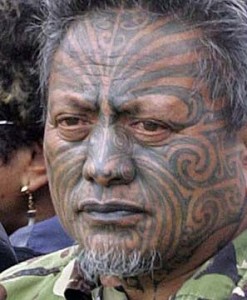previous
What are examples of not seeing the forest for the trees?
starting exploration
Questions and thoughts related to “A Matter of Time”
- Attached to the essay "A Matter of Time"
Subjects that become more obscure the closer you look.
Posted January 11, 2012 5:11 pmTake the simple question of the derivation of the word butterfly. In so many languages the answer remains an issue of debate. I asked Denise Almao, a New Zealand friend, to look into the derivation of the Maori ‘pepe.’ Since the dictionary offered no information on derivation, she, in turn, asked another friend, who was able to check the National Archives. This is what Denise wrote:
“The word appears to have two meanings – (a) a concrete real world meaning (noun) is moth or butterfly and (b) a metaphorical meaning relating to fluttering, frisking, frolicking.
 Like many Maori words, it can be found in several forms, ie ‘pepe’ where both ‘e’ sounds are short and ‘pe pepe’ where the ‘e’ in the first word is conspicuously long and the ‘e’ sounds in the second word are short. In her [Denise’s friend’s] view, the pronunciation of ‘pe pepe’ does conjure up an image of the darting, erratic flight of a moth or butterfly. However, one has always to bear in mind that onomatopoeia can sound different to speakers of different languages, eg Maori has a more restricted set of consonants and lacks a ‘b,’ or ‘d’ sound.
Like many Maori words, it can be found in several forms, ie ‘pepe’ where both ‘e’ sounds are short and ‘pe pepe’ where the ‘e’ in the first word is conspicuously long and the ‘e’ sounds in the second word are short. In her [Denise’s friend’s] view, the pronunciation of ‘pe pepe’ does conjure up an image of the darting, erratic flight of a moth or butterfly. However, one has always to bear in mind that onomatopoeia can sound different to speakers of different languages, eg Maori has a more restricted set of consonants and lacks a ‘b,’ or ‘d’ sound.
In short, I think you can make a good case for the word as spoken representing a form of onomatopoeia but there is no way of being sure because standard Maori dictionaries offer no etymology or examples of poetic usage. She [Denise’s friend] said the Maori Language Commission is best placed to comment as they might be able to check the ‘nga moteatea’ or old laments and oral histories… The only other point to note is that New Zealand has very few indigenous butterflies (whether plain or colourful) and many more native moths. I think this reinforces the case for the word having a link to their motion in flight rather than to their appearance.”
So here is a little word, ‘pepe,’ in a language that turns out to be poorly documented in dictionaries, and that may or may not be pronounced in a way that suggests fluttering flight (though there is reason to think the former). Maori is still spoken, but it seems one would have to travel to New Zealand with a recorder to interview Maori-speakers, and even then one might not find consensus either in their pronunciation or in the interpretation of their pronunciation. And the oral history might reveal another explanation for the word altogether.
Or take the question of whether the 7 Wonders List was devised to encourage travel or just put to that use: see the page here. At some point the name of the list changed from ‘theama” (sights) to ‘thaumatos’ (wonder), but as Gail Pool points out, “To me, these words seem very similar, and…you can’t really read the difference between them without knowing much more about the time and context in which they were used.” Apparently, both words derive from a verb meaning, ‘to gaze at.’ Furthermore, there were only 21 years when all the “wonders” were standing. Some feel this may explain the shift from ‘sights’ to ‘wonders,’ but why so? If travelers were being encouraged to visit sights that were in ruins or had ceased to exist, why would calling them ‘wonders’ make the trip any more compelling?
This whole issue calls up a free association to a fascinating film made by Charles and Ray Eames, called Power of Ten. Beginning at a lakeside picnic in Chicago, the film telescopes away from the scene in multiples of ten every ten seconds, until our own galaxy has become a speck of light. Beginning back at the lake, the film moves into the hand of a picnicker, increasing the magnification every ten seconds, until we are inside an atom in the molecule of a blood cell. Moving in either direction, we go from clarity to obscurity and back to clarity. Have a look: it is mesmerizing, even terrifying. 
topics: culture
share
 site feed
site feed


